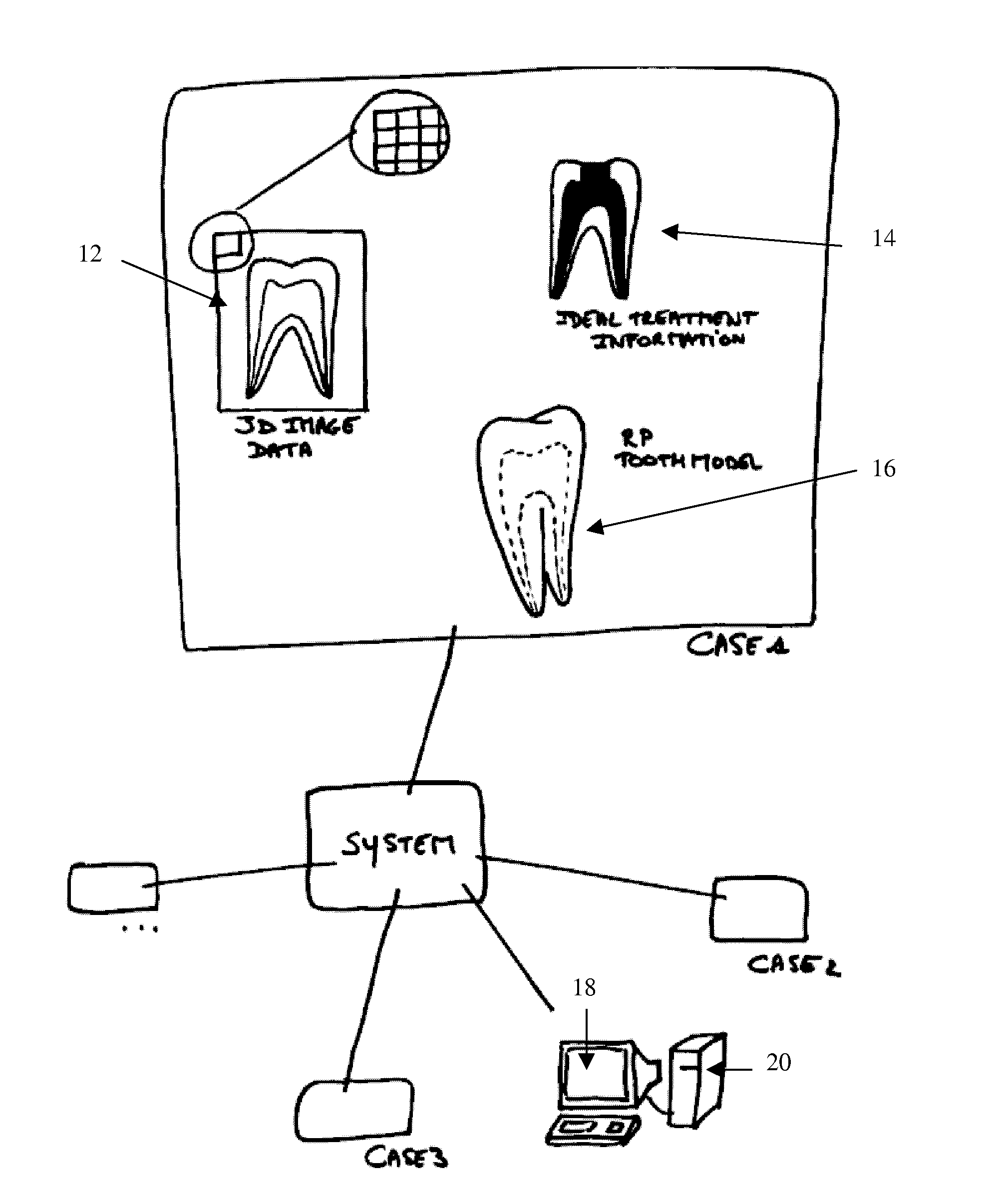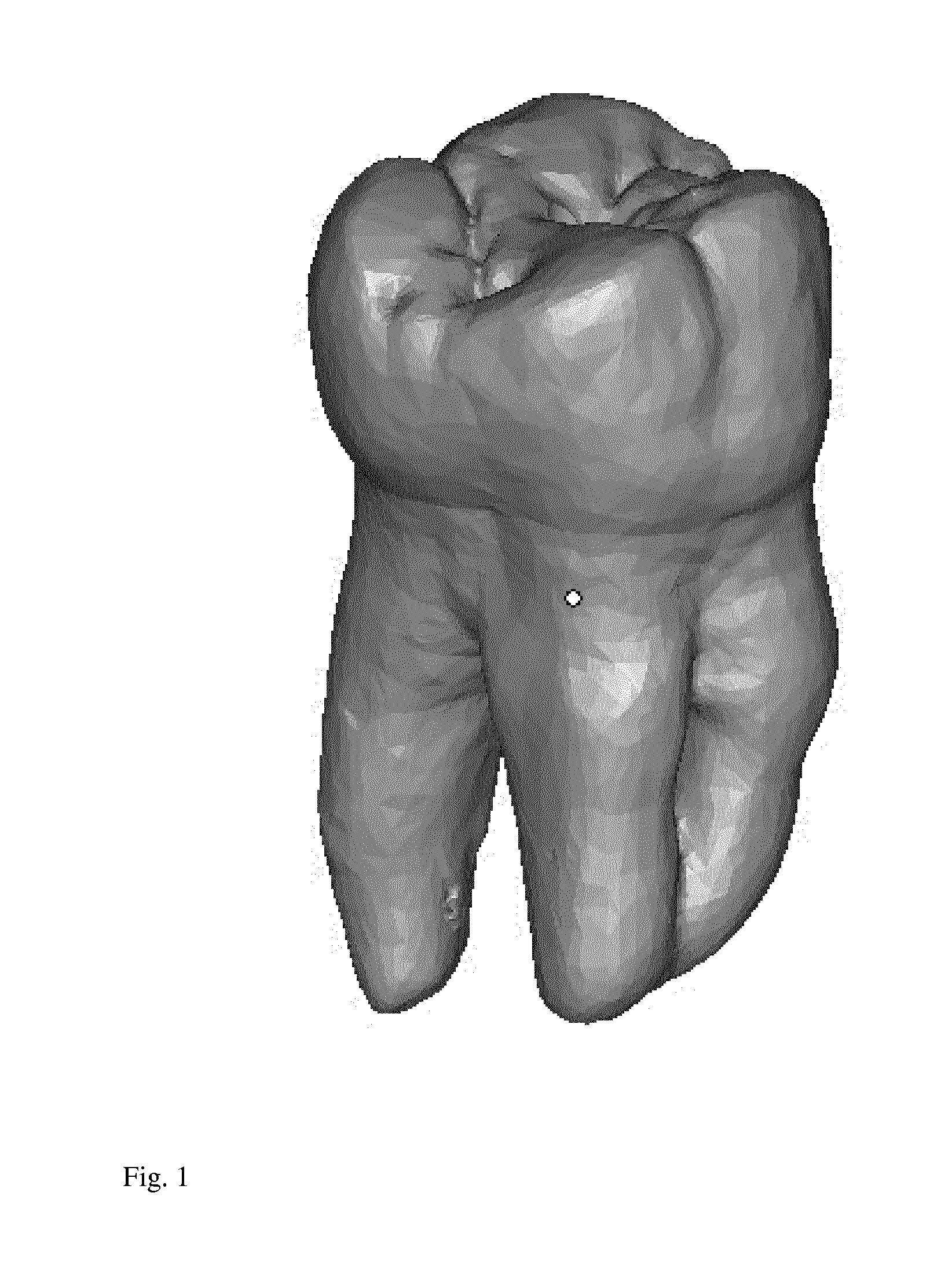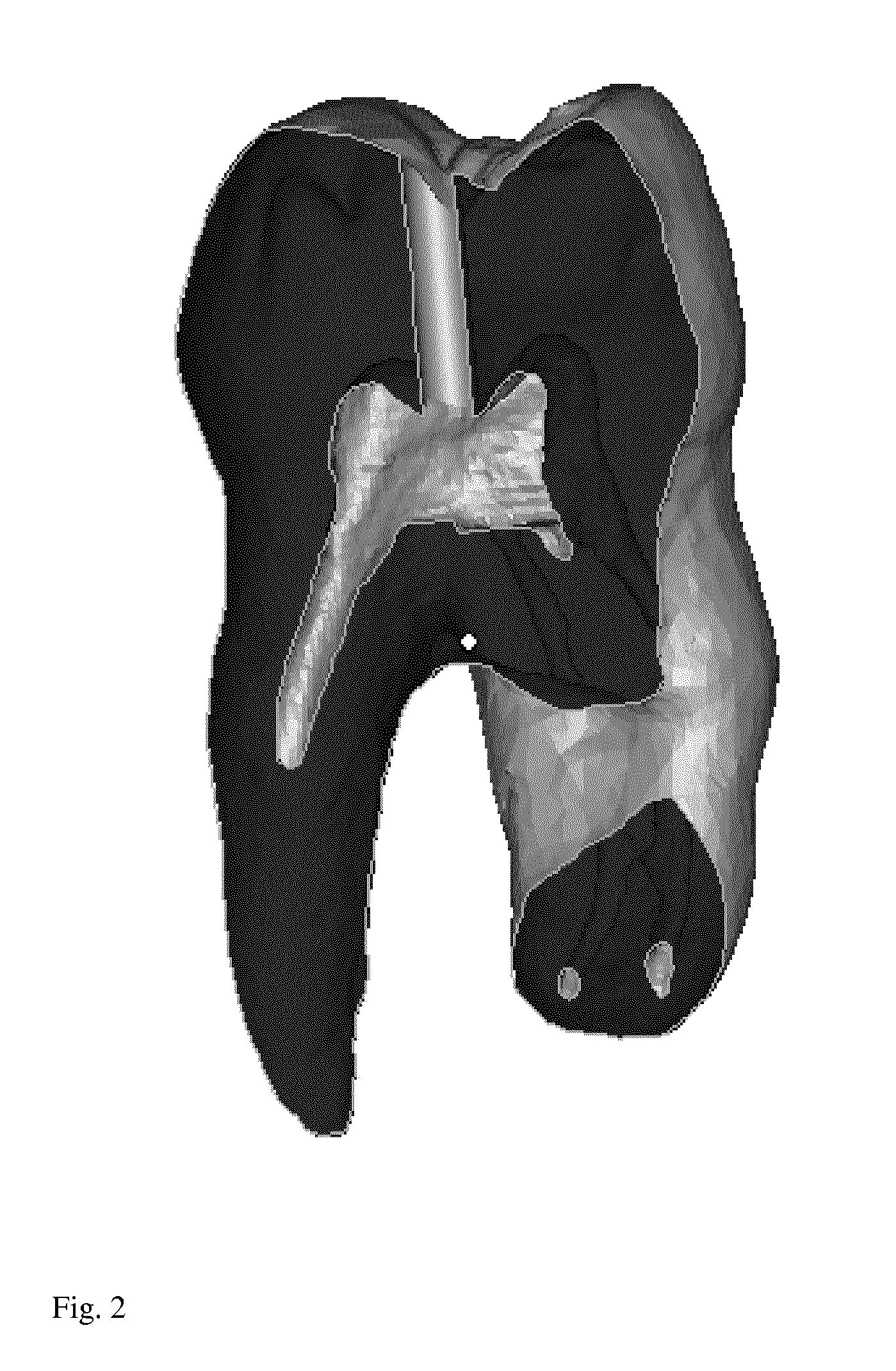Endodontic treatment simulation system
a simulation system and endodontic technology, applied in dentistry, special data processing applications, medical science, etc., can solve problems such as fracture of root canal instruments, incomplete root canal cleaning, and multiple risks of treatment, and achieve the effect of evaluating variability and allowing feasibility testing of root canal treatmen
- Summary
- Abstract
- Description
- Claims
- Application Information
AI Technical Summary
Benefits of technology
Problems solved by technology
Method used
Image
Examples
Embodiment Construction
[0034]The present invention will be described with respect to particular embodiments and with reference to certain drawings but the invention is not limited thereto but only by the claims.
[0035]The FIG. 10 shows a typical commercially available endodontic training block.
[0036]Embodiments of the present invention relate to a root canal treatment simulation system comprising in one or more physical tooth models. FIG. 6 shows a schematic overview of the system 10. Several patient or lifelike cases 1 to 3 or more can be part of the system 10. The system 10 is a computer based system comprising a computer or computer network 20 as well as a display 18. Optionally, the system can also include means to digitize (e.g. a digitizer) the tooth model after simulation of the treatment has been performed.
[0037]Embodiments of the present invention provide a device for use in endodontic treatment simulation, the device comprising at least one physical tooth model 16 including pulp chamber and root ...
PUM
| Property | Measurement | Unit |
|---|---|---|
| Shape | aaaaa | aaaaa |
Abstract
Description
Claims
Application Information
 Login to View More
Login to View More - R&D
- Intellectual Property
- Life Sciences
- Materials
- Tech Scout
- Unparalleled Data Quality
- Higher Quality Content
- 60% Fewer Hallucinations
Browse by: Latest US Patents, China's latest patents, Technical Efficacy Thesaurus, Application Domain, Technology Topic, Popular Technical Reports.
© 2025 PatSnap. All rights reserved.Legal|Privacy policy|Modern Slavery Act Transparency Statement|Sitemap|About US| Contact US: help@patsnap.com



